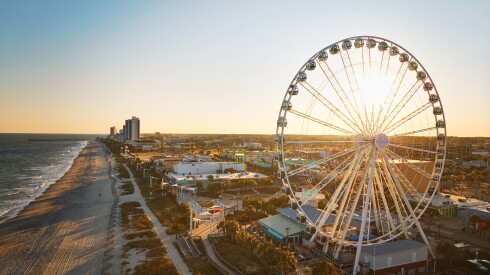Visiting the United States could soon become more costly for some travelers.
The State Department has announced a 12-month pilot program requiring travelers from certain countries with high visa-overstay rates to post refundable bonds as a condition of visa issuance. The bonds range from $5,000 to $15,000.
News of the trial period was published in the Federal Register, the official daily publication of the U.S. government, on August 5. The notice doesn’t yet list which countries will be subject to the program, but the initial list is slated to be released when the program commences on August 20, 2025. Countries could be added or removed on a rolling basis, per the order, which also states the trial will apply to all B1 and B2 (business and tourism, respectively) visas for citizens of the nations that will be specified.
Per the notice, the amount applicants will be asked to pay will be “based upon the applicant’s circumstances as determined by the consular officer, but in an amount of no less than $5,000, unless the bond requirement is waived.” Those who depart the U.S. before their visa expires would have their bonds refunded, whereas those who don’t would lose the bond amount.
Similarly, those who do not comply with the conditions of their visa (for instance, they take unapproved work) would not see their funds returned. Once the program launches, the notice explains, travelers who are part of the pilot would be allowed to travel in and out of designated U.S. airports only.
During the 2023 fiscal year, more than 300,000 foreign nationals stayed in the U.S. after their tourism or business visa ended, with some of the highest overstay rates attributed to those from Chad, Laos, Haiti, and Congo, according to an August 2024 report from the Department of Homeland Security.
Citizens of the 42 predominantly European countries and territories, as well as those from Australia, Brunei, Japan, New Zealand, Qatar, South Korea, and Singapore, who are part of the Visa Waiver Program (allowing them to visit the U.S. for up to 90 days for tourism or business without a visa), would not be required to post a bond.
This pilot program revives a similar effort introduced in 2020 that was curtailed due to the COVID-19 pandemic. The original program would have targeted individuals from 23 countries, primarily in Africa.
Historically, the U.S. State Department has discouraged the use of visa bonds, citing the cumbersome process of posting, processing, and discharging bonds. However, the current administration views the pilot program as a necessary step to address national security concerns and encourage foreign governments to improve their screening and vetting procedures.
The added bond fee comes in the lead-up to what is expected to be a busy time for U.S. inbound travel, with America’s 250th birthday and the 2026 FIFA World Cup (which the U.S. is cohosting with Canada and Mexico) on the horizon next year. Critics warn that measures such as the bond fee, coupled with other inbound travel policies, could negatively affect tourism.
In a statement shared with Afar, Erik Hansen, SVP of government relations for the U.S. Travel Association, the country’s tourism advocacy group, said the scope of the visa bond program appears to be limited: An estimated 2,000 applicants will be affected, most likely from a few countries with relatively low U.S. tourism numbers.
“We remain most concerned with the $250 Visa Integrity Fee recently enacted by Congress, which would apply across all nonimmigrant visa categories and applicants,” Hansen said. “If this fee is implemented, the U.S. will have one of the highest visitor visa fees in the world, if not the highest. If we are to maintain a competitive position in the global travel market, it’s critical that U.S. visa policy reflects both national security priorities and the significant economic value of international visitation.”








